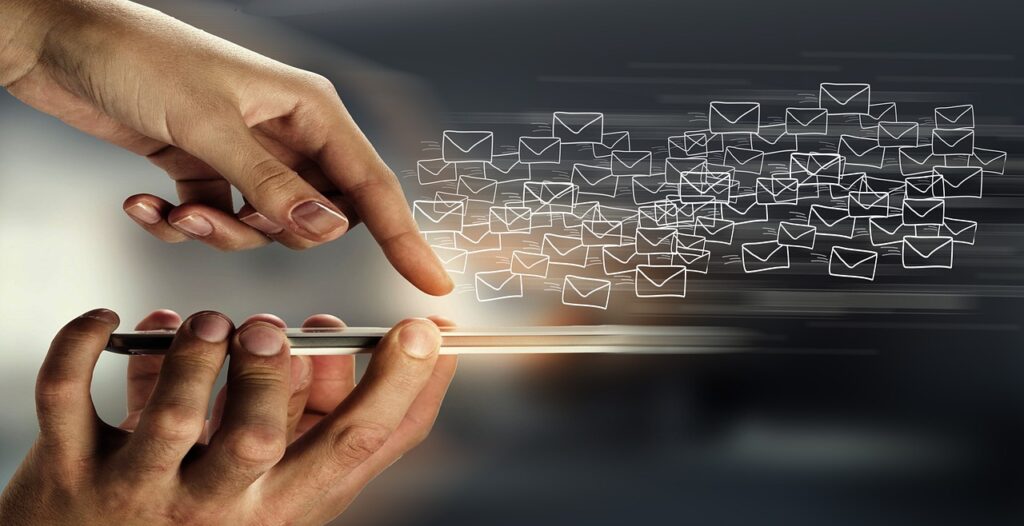Email marketing is evolving fast. As we move into 2025, brands are focusing on innovative ways to make emails more engaging, impactful, and relevant to their audiences. Email marketing trends like AI-driven personalization, real-time content, and sustainability are setting the stage for a new era in digital marketing. Understanding these trends can help businesses refine their strategies to build stronger relationships with their subscribers and maximize the impact of each email campaign.
In this article, we’ll explore some of the key email marketing trends for 2025, including hyper-personalization, data privacy, automation, interactive content, and eco-friendly practices. Each trend highlights a significant shift that digital marketers need to consider to stay competitive in the inbox.
Hyper-Personalization and Segmentation
One of the most influential email marketing trends for 2025 is hyper-personalization. Gone are the days when simply using the recipient’s first name was enough to personalize an email. In 2025, hyper-personalization will extend to nearly every element of the email experience, from targeted content to dynamically updated product recommendations.
Hyper-personalization uses detailed data about customer preferences, behaviors, and purchase history to create emails that feel uniquely crafted for each recipient. Advanced segmentation allows marketers to divide audiences into very specific groups based on various factors like location, purchase history, and engagement patterns. For example, a clothing retailer could send a special offer to customers who frequently shop during seasonal sales, while another segment might receive updates about new product lines.
This trend benefits both businesses and customers. Subscribers get content that aligns with their interests, increasing the chances of engagement, while companies enjoy higher open rates, click-throughs, and conversions. Personalizing email content to this degree requires sophisticated tools and a commitment to regularly updating and refining audience data.
AI-Driven Personalization
Artificial Intelligence (AI) is the driving force behind hyper-personalization. AI can process vast amounts of data to detect trends, identify customer preferences, and predict future behaviors. In email marketing, AI is used to optimize send times, recommend relevant products, and even generate personalized email content.
AI-driven personalization enables marketers to tailor emails to individual recipients in real-time, whether by adjusting images based on demographics or customizing offers according to purchase history. This approach doesn’t just boost engagement; it builds loyalty. Recipients appreciate receiving emails that feel curated specifically for them, increasing the chances they’ll remain subscribed and interact with future messages.
Emphasis on Privacy and Compliance
In recent years, data privacy has become a significant concern for consumers and regulators alike. By 2025, email marketing trends will increasingly focus on privacy and data protection. With regulations like the GDPR (General Data Protection Regulation) and CCPA (California Consumer Privacy Act) already in place, many countries are enacting or updating data privacy laws to protect consumers. These laws hold marketers accountable for the ways they collect, store, and use customer data.
Transparency is essential for brands in this climate. Email marketers will need to make it clear how they collect and use customer data, and they’ll need to obtain explicit consent from subscribers. Privacy-forward practices not only keep brands compliant but also build trust. As consumers become more selective about the companies they interact with, businesses that prioritize transparency are more likely to retain loyal customers.
Stricter Data Protection Regulations
In 2025, stricter regulations are expected across various regions. These laws will impact how businesses handle customer data, from obtaining initial consent to ensuring secure data storage and management. Compliance is essential to avoid costly fines, but it’s also an opportunity to foster trust.
Marketers can also reduce their reliance on data by using contextual cues, like time of year or current events, to tailor emails without relying heavily on personal information. Developing a transparent, privacy-conscious approach to email marketing is a powerful way to reassure customers that their data is secure.
AI and Automation in Email Campaigns
AI-powered automation is set to be a key driver of innovation in email marketing in 2025. Automation helps marketers streamline campaigns, making it possible to deliver the right message at the right time without manual input. In the coming years, automation will evolve to allow for even more sophisticated and dynamic interactions based on real-time behaviors and preferences.
Automation isn’t just for basic tasks like welcome emails or abandoned cart reminders. It can also facilitate complex workflows, such as re-engagement campaigns that adjust content based on a subscriber’s recent interactions. This makes emails feel highly relevant, which increases the likelihood of conversions. By incorporating automation, marketers can manage large-scale campaigns efficiently while delivering highly personalized content.
Predictive Analytics for Email Marketing
One of the most exciting applications of AI in email marketing is predictive analytics. Predictive analytics leverages historical data to forecast future customer actions. In 2025, marketers can use these insights to predict when a customer is likely to make a purchase, unsubscribe, or re-engage with a brand.
Predictive analytics allows for more precise targeting and helps marketers allocate resources to the customers most likely to convert. With this approach, emails become proactive rather than reactive, making them an even more powerful tool for customer engagement.
Interactive and Visual-First Emails
As inboxes become more crowded, static emails are becoming less effective. In 2025, interactive content will be one of the leading email marketing trends as brands seek to create immersive experiences within emails. Interactivity encourages engagement directly within the email, making the user experience seamless and reducing the need for additional clicks.
Interactive elements can include carousels, quizzes, polls, and embedded videos that bring emails to life. For example, a fashion brand could include an interactive carousel that allows users to swipe through new products, while a travel company might include a short video clip of a destination.
In addition to interactive features, emails in 2025 will be more visually driven. High-quality images, GIFs, and animations will become staples, making emails not just informative but visually engaging. This focus on visual content will help brands stand out and make a lasting impression in recipients’ minds.
Sustainable and Eco-Friendly Email Marketing
As environmental consciousness grows, brands are considering the impact of digital communications, including email marketing. In 2025, eco-friendly practices will become an important part of the email marketing conversation. The energy required to send, receive, and store emails has a significant carbon footprint, and brands that recognize this are seeking ways to make their email strategies more sustainable.
Sustainable email marketing may involve practices like reducing email frequency, using efficient design to limit data consumption, and encouraging subscribers to adjust their preferences to avoid unwanted emails. Marketers who prioritize eco-friendly practices can appeal to environmentally conscious consumers and help minimize the industry’s environmental impact.
Reducing Email Carbon Footprint
To reduce the carbon footprint of email marketing, brands are focusing on minimalistic email designs and cutting down on unnecessary emails. Practices like compressing images and avoiding excessive use of tracking pixels can reduce the data load of each email, making it more energy-efficient. By adopting these practices, brands can make a positive environmental impact while also showing customers they care about sustainability.
Real-Time Data and Dynamic Content
Real-time data will continue to play a crucial role in email marketing as brands aim to deliver content that’s relevant at the moment of interaction. This approach allows marketers to adjust email content based on factors like time of day, location, and weather, making each email feel timely and personal.
For example, a retail brand could send weather-based clothing recommendations, or an airline could provide last-minute travel deals based on the subscriber’s location. Dynamic content allows marketers to deliver value through contextually relevant information, which drives engagement and increases the likelihood of conversions. Real-time adaptability is particularly important for brands looking to create impactful, memorable customer interactions.
Conclusion
The future of email marketing is defined by innovation and customer-centric strategies. Trends like hyper-personalization, privacy compliance, AI-driven automation, interactive content, and sustainability are all reshaping how brands approach email marketing. As we head into 2025, businesses must keep pace with these email marketing trends to create meaningful and effective connections with their audiences.
Embracing these changes will allow brands to remain competitive in the inbox, making each email an opportunity to engage, inform, and inspire. By aligning with the evolving expectations of customers, email marketers can build trust, foster loyalty, and achieve lasting success in their campaigns.


